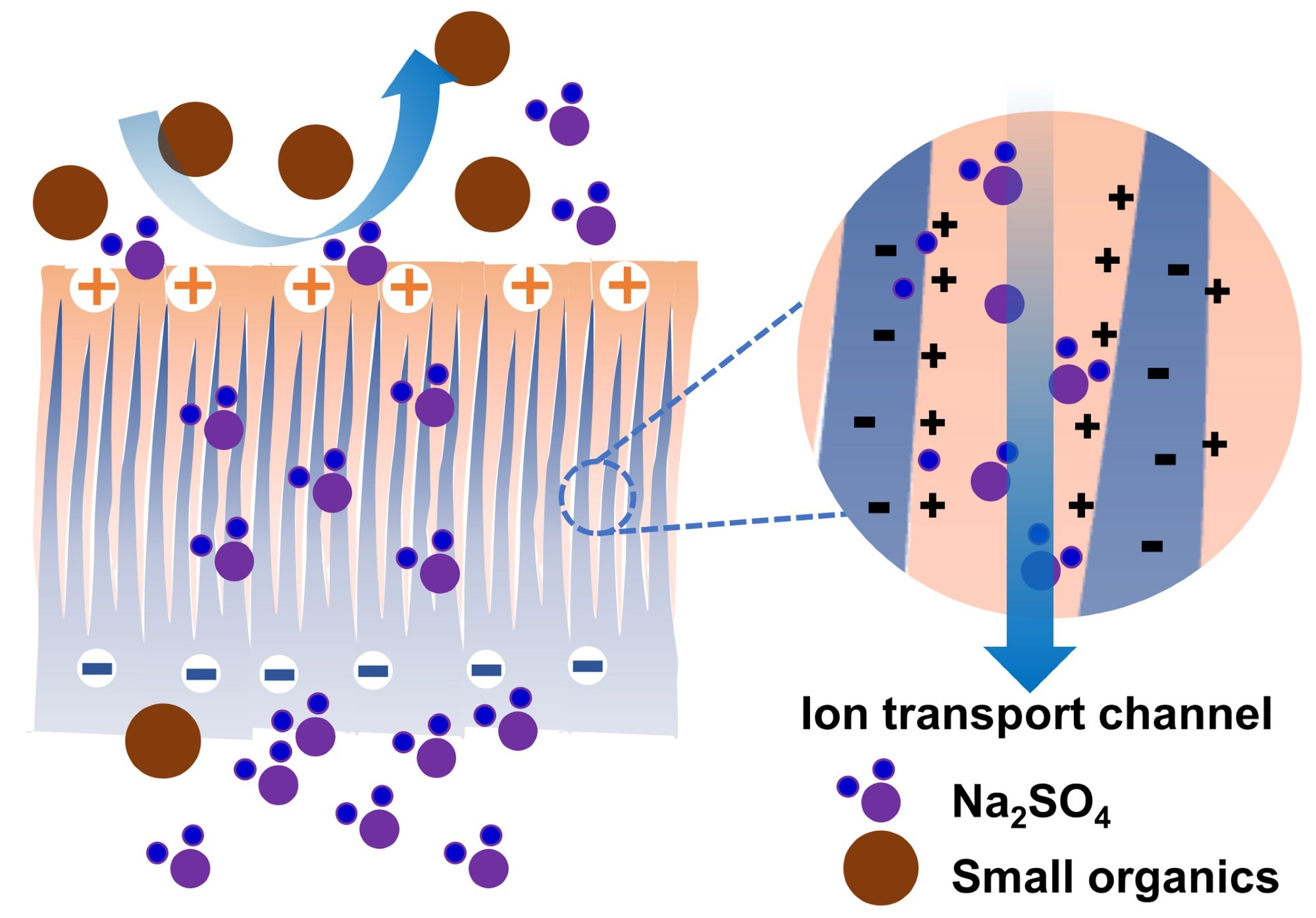Reviewed by Alex SmithDec 1 2022
A research team from the Institute of Process Engineering (IPE) of the Chinese Academy of Sciences, under the guidance of Prof. Yinhua Wan, has created a novel “etching–swelling–planting” technique to prepare a mix-charged nanofiltration (NF) membrane for wastewater treatment after interfacial polymerization (IP).
 Improving the separation selectivity of small organics/Na2SO4 of a polyamide nanofiltration membrane by deepening positive charge distribution and narrowing pore size via an “etching–swelling–planting” strategy. Image Credit: Yuling Ren.
Improving the separation selectivity of small organics/Na2SO4 of a polyamide nanofiltration membrane by deepening positive charge distribution and narrowing pore size via an “etching–swelling–planting” strategy. Image Credit: Yuling Ren.
This membrane exhibits strong penetration for inorganic salts while maintaining high retention for tiny organics, which is advantageous in achieving “zero discharge” in high-salinity organic wastewater reclamation.
The research was published on November 29th, 2022, in Environmental Science & Technology.
Negatively charged NF membranes are frequently accessible and exhibit good retention for divalent anions (e.g., SO42−). Due to inadequate spatial charge distribution, contemporary positively charged NF membranes retain a high amount of Na2SO4 while being more susceptible to fouling by negatively charged organics in wastewater.
To increase the separation selectivity of tiny organics/Na2SO4, scientists have tried to increase the positive charge distribution and restrict the pore size of polyamide NF membranes using an “etching–swelling–planting” technique.
The IP process was used to create the pristine polyester (PE)-polyamide (PA) NF membranes, which used piperazine and tannic acid as aqueous monomers and trimesoyl chloride and Fe(acac)3 in n-hexane as organic monomers.
In polyethyleneimine (PEI) alkaline solution, the PE structure was etched and hydrolyzed into carboxyl groups and reactive phenolic hydroxyl groups. At the same time, the PEI molecules diffused and were embedded into the swollen polymer network and covalently linked with tannic acid inside the separation layer.
As a result of thoroughly integrating polyamine polymers into the negatively charged PA layer, a distinct mix-charged membrane with limited pore size was created.
This highly controlled membrane structure decreases Na2SO4 retention (from 97% to 43%) while increasing glucose retention (from 45% to 71%). The resultant membrane displayed remarkable antifouling performance, even for coking wastewater, due to its high surface hydrophilicity and smoothness and the preservation of plentiful negatively charged groups (i.e., −OH and −COOH) inside the PA layer.
Based on mussel-inspired catecholamine chemistry, we developed a new scalable strategy for modification of PA NF membranes. Our work also emphasizes the importance of charge distribution in precise separation of charged solutes.
Jianquan Luo, Study Corresponding Author and Professor, Institute of Process Engineering, Chinese Academy of Sciences
Journal Reference:
Ren, Y., et al. (2022) Planting Anion Channels in a Negatively Charged Polyamide Layer for Highly Selective Nanofiltration Separation. Environmental Science & Technology. doi.org/10.1021/acs.est.2c06582.